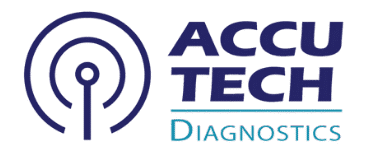Public Health & Outbreak Management
"Public Health & Outbreak Management" are two intrinsically linked concepts. Public health is the science and art of preventing disease, prolonging life, and promoting health through the organized efforts and informed choices of society, organizations, public and private communities, and individuals. Outbreak management is a core function and critical application of public health principles, specifically focused on controlling and mitigating the spread of infectious diseases when they occur at higher-than-expected levels.
Purpose of Public Health & Outbreak Management
The overarching purpose is to protect and improve the health of populations. Specifically, for outbreak management, the goals are to:
Interrupt Transmission
Stop the spread of the infectious agent as quickly as possible.
Minimize Morbidity and Mortality
Reduce illness, complications, and deaths associated with the outbreak.
Identify and Control the Source
Pinpoint where the infection originated and implement measures to eliminate or neutralize it.
Key Components and Activities of Outbreak Management:
Outbreak management typically follows a systematic, multi-stage approach:
Prevent Future Occurrences
Stop the spread of the infectious agent as quickly as possible.
Maintain Public Trust and Safety
Provide clear, accurate, and timely information to the public, alleviating fear and promoting cooperation.
Preserve Healthcare System Capacity
Prevent overwhelming hospitals and healthcare resources.
Key Components and Activities of Public Health Surveillance
Public health surveillance is a continuous cycle involving several interconnected activities:
Detection and Verification
- Activity: Identifying an unusual increase in cases of a particular disease or the appearance of a novel disease. This often comes from routine public health surveillance data (e.g., laboratory reports, clinician notifications), but can also originate from syndromic surveillance (e.g., increased emergency room visits for flu-like symptoms), media reports, or even astute clinicians.
- Verification: Confirming that a true outbreak is occurring (not just a reporting artifact) and verifying the diagnosis of the disease.
Investigation
- Activity: A systematic process to characterize the outbreak and identify its cause.
- Case Definition: Developing a clear and consistent definition for what constitutes a “case” in the outbreak.
- Case Finding: Actively searching for additional cases (e.g., through contact tracing, reviewing medical records).
- Descriptive Epidemiology: Analyzing cases by person (who is affected – age, sex, risk factors), place (where are cases occurring – geographic distribution), and time (when are cases occurring – epidemic curve). This helps generate hypotheses.
- Hypothesis Generation: Based on descriptive epidemiology, formulating a plausible explanation for the outbreak’s cause and mode of transmission.
- Analytical Epidemiology: Conducting studies (e.g., case-control studies, cohort studies) to formally test hypotheses and identify specific risk factors or exposures.
- Laboratory Investigation: Collecting and testing clinical and environmental samples to identify the causative pathogen, its characteristics (e.g., antimicrobial resistance), and genetic relatedness among isolates.
- Environmental Investigation: Inspecting potential sources (e.g., food establishments, water sources, healthcare facilities) to identify environmental factors contributing to the outbreak.
Control Measures Implementation
- Activity: Implementing targeted interventions to prevent further transmission and mitigate the impact of the outbreak. These measures are often implemented concurrently with the investigation.
- Source Control: Eliminating or neutralizing the source of infection (e.g., recalling contaminated food, treating contaminated water, closing a facility).
- Interrupting Transmission:
- Isolation: Separating infected individuals from healthy ones.
- Quarantine: Restricting the movement of individuals who have been exposed to the disease but are not yet sick.
- Contact Tracing: Identifying and monitoring individuals who have been in contact with confirmed cases.
- Infection Prevention and Control (IPC) Practices: Reinforcing hand hygiene, proper use of PPE, environmental cleaning in healthcare settings.
- Non-Pharmaceutical Interventions (NPIs): Social distancing, mask-wearing, school closures, travel restrictions.
- Protecting Susceptible Individuals:
- Vaccination: Administering vaccines to prevent infection or reduce severity.
- Prophylaxis: Providing medications to prevent infection in exposed individuals (e.g., post-exposure prophylaxis).
- Treatment: Providing appropriate medical care and antiviral/antibiotic therapy to infected individuals.
Communication and Coordination
- Activity: Providing clear, accurate, and timely information to all stakeholders.
- Internal Communication: Within the outbreak response team and across relevant government agencies.
- External Communication: To healthcare providers, affected communities, the media, and the general public. This includes addressing misinformation.
- Stakeholder Coordination: Collaborating with various entities, including other government agencies (e.g., emergency management, agriculture), healthcare systems, law enforcement, and community leaders.
- International Collaboration: For cross-border outbreaks, working with international organizations like the WHO.
Evaluation and Recovery
- Activity: Reviewing the response to identify successes, challenges, and lessons learned.
- Post-Outbreak Review: Assessing whether objectives were met and the effectiveness of control measures.
- Reporting: Preparing a final report documenting the outbreak, investigation, control measures, and recommendations.
- Preparedness Enhancement: Updating outbreak response plans, improving surveillance systems, and strengthening public health infrastructure based on lessons learned to prevent future outbreaks.
Role of Public Health Agencies in Outbreak Management
Public health agencies (local, state/provincial, national, and international, such as the CDC and WHO) play a central, coordinating role in outbreak management:
Leadership and Governance:
Establishing policies, guidelines, and legal frameworks for outbreak response.
Surveillance and Early Warning
Operating and maintaining robust surveillance systems to detect outbreaks.
Epidemiological Expertise
Providing trained epidemiologists to lead investigations, analyze data, and identify risk factors.
Laboratory Capacity
Maintaining public health laboratories capable of rapid pathogen identification, resistance testing, and molecular typing (often supporting clinical labs).
Research
Conducting or facilitating research to better understand emerging pathogens and develop new interventions.
Risk Communication
Developing and disseminating clear public health messages.
Resource Mobilization
Coordinating the allocation of personnel, equipment, and medical supplies.
Intervention Implementation
Leading or supporting the implementation of control measures (e.g., mass vaccination campaigns, contact tracing).
Training and Capacity Building
Educating healthcare workers and the public on infection prevention and control.
Public health and outbreak management are dynamic fields that continuously adapt to new threats, emphasizing preparedness, rapid response, and collaborative efforts to safeguard community health.

